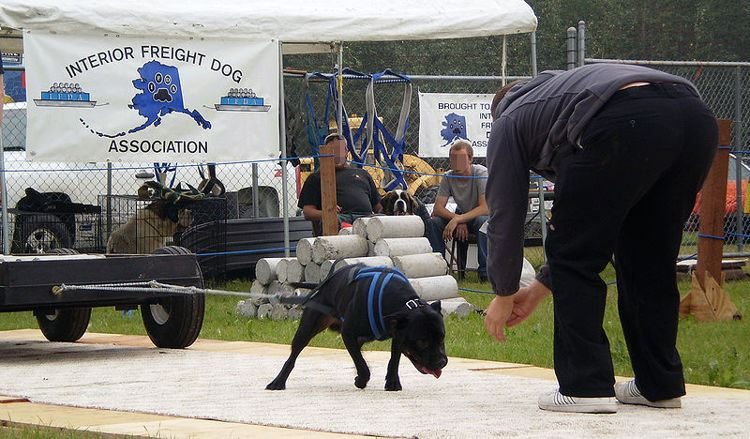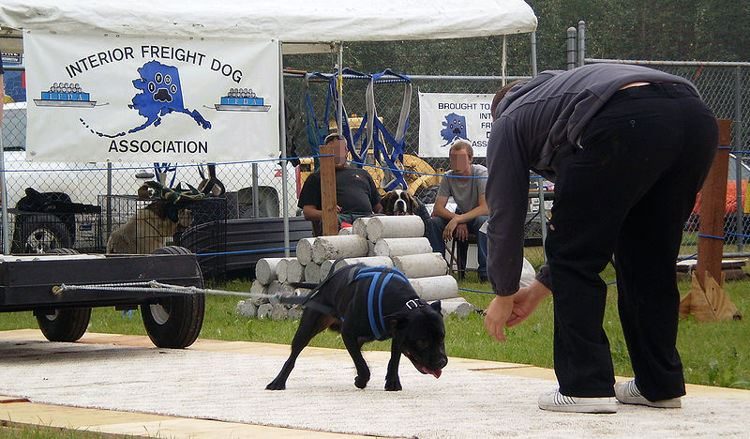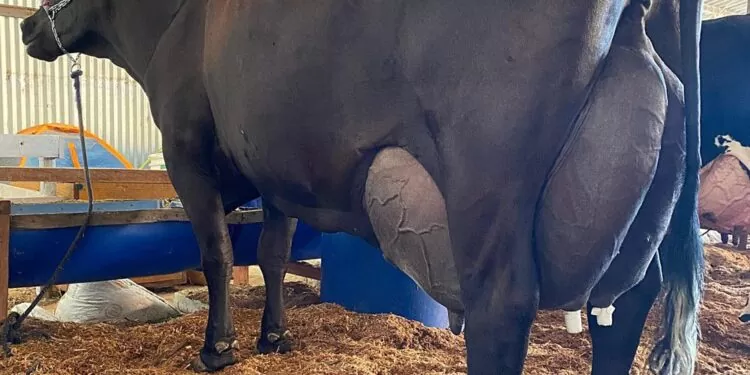Dog weight pulling is an increasingly popular yet highly controversial sport in which dogs of various breeds compete against each other by pulling a trolley loaded with several tons of bricks or concrete blocks 15 feet in less than 60 seconds.
Dog weight pulling has been around for decades, but it has become increasingly controversial in recent years as more and more animal welfare activists started condemning the sport as animal cruelty. The fact that weight pulling is also a known training method for building stamina and making canines more powerful for dog fighting hasn’t exactly helped the reputation of the sport either. Still, dog weight pulling enthusiasts claim that even though some animals end up pulling several dozen times their own weight, the risk of injury is minimized by great conditioning and a genetic predisposition to pulling heavy loads. They also claim that the sport can be beneficial to dogs, as it gives them much needed exercise and strengthens the bond to their owners.

Photo: JKBrooks85/Wikimedia Commons
During sanctioned weight pulling competitions, dogs are harnessed and attached to a railway-type trolley loaded with weights. The animal has to use its strength to pull the trolley 15 feet (4.5 meters) in 60 seconds. Owners are forbidden from touching the dogs and instead wait at the end of the track, calling the animals and encouraging them to push forward. Weights are added to the trolley until a winner is determined.
The weight of the trolley depends on the category of participants, but it can reach over 5,000 pounds. For example, a 2011 video shows two dogs – an American Bulldog and a pit-bull – pulling 5,185 pounds, and according to a 2017 article in the Suffolk News Herald, Delbert, a 150-pound Malamute, set a new record by pulling 5,400 pounds. However, critics claim that this kind of extreme weights can cause serious injuries to the dogs.
“The potential physical damage to these dogs is very real, particularly since they are excitable, strive to please their owners and are very competitive,” one doctor said. “The conditions most likely to be caused by the activity would be muscular straining with tearing (and) lactic acid accumulation with degenerative changes of muscle fibres.”
“These dogs will most likely suffer from severe osteoarthritis in all joints, especially the forelegs and neck, which will lead to pain and discomfort,” another veterinarian added.
However, some vets claim that weight pulling doesn’t qualify as animal cruelty and is not detrimental to the animals’ health, as long as the owners condition their canines properly.
“If it is done under controlled conditions and the dogs are gradually trained and do it willingly, I do not see it as animal cruelty,” Vibeke Korup, a Danish veterinarian at Holstebro Animal Hospital, told CPH Post. “These dogs have been used as sledge dogs for centuries. It is in their breeding to pull.”
Breeders of weight pulling dogs insist that while the sport has its risks, their animals know when the weight is too much for them and stop in order to prevent injuries to their backs and hips. Husband-and-wife team Dave and Susan Gallagher told Aljazeera that they don’t force their dogs to pull, instead, they build a strong bond with them to encourage them to work hard.
“It’s a bonding thing,” Dave said. Can you force the dogs into doing it? Yeah. Is it the right way of doing it? No. If you bond with the dogs, they’ll work a lot harder than if you force them into doing it.”
However, Susan Gallagher admitted that she has witnessed first hand the effects of abusing dogs and forcing them into something they can’t do. She was at a competition in Massachusetts in which a pit bull was shaking in the pull area when it couldn’t pull weight. She suspected that she had been abused by her owner.
“The dog was pi**ing in the chute, and she was shaking, she was terrified,” the dog trainer recalled.
It’s the competitive nature of the sport that has animal activists concerned about the animals, as some dog owners seem to care much more about winning than they do about the well-being of their animals.
“It can be extremely dangerous to dogs, especially if they haven’t been conditioned or trained for it,” Lindsay Rajt, a spokesperson for PETA (People for the Ethical Treatment of Animals) told Dog Time. “Another concern is when you have owners who are more focused on winning than the safety of their dogs.”
“To me, it’s wrong,” former Seminole Commissioner and animal advocate, Dan Hester, told CBS10 News. “I’m not saying it is illegal, but I am suggesting in the 21st century, that’s not the way you treat what’s meant to be a companion animal.”













